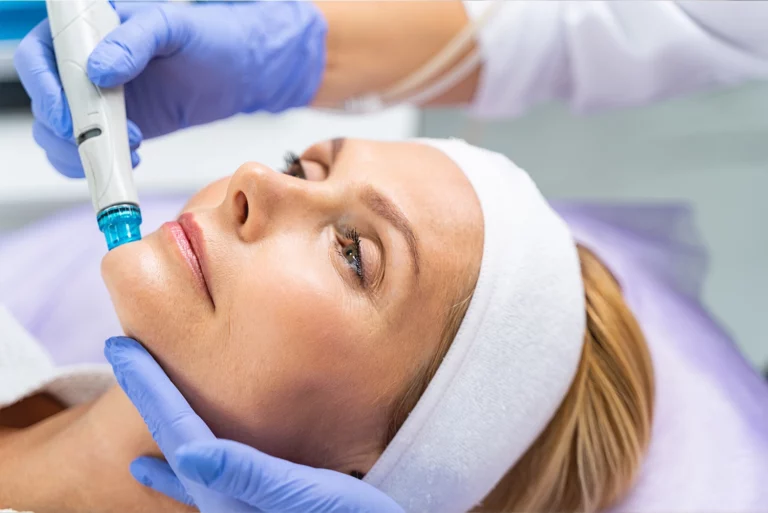Hydrodermabrasion is an advanced skincare technique that combines the benefits of traditional microdermabrasion with the hydrating properties of water. Unlike conventional microdermabrasion methods, which rely on abrasive particles or diamond-tipped wands, hydrodermabrasion employs a gentle yet effective jet of water infused with oxygen and specialised serums containing essential ingredients like antioxidants, hyaluronic acid, vitamins, and botanical extracts.
This stream of water exfoliates the outer layer of the skin, eliminating dead cells, impurities, and debris in the process. By removing these surface layers, hydrodermabrasion reveals fresher, rejuvenated skin underneath, promoting a smoother and more vibrant complexion.
$140 Per Session

One of the significant advantages of hydrodermabrasion is its versatility and suitability for various skin types. The procedure is generally painless and non-invasive, making it an attractive option for individuals seeking skin rejuvenation without the discomfort or downtime associated with more aggressive treatments. There is typically no recovery time needed after hydrodermabrasion, allowing patients to resume their daily activities immediately.
In addition to exfoliation and serum infusion, hydrodermabrasion incorporates a gentle suction mechanism. This suction serves multiple purposes: it further cleanses the skin by removing remaining impurities and excess fluids, helps unclog pores, and promotes lymphatic drainage. Clearing out pores reduces the likelihood of acne and blackheads while improving overall skin texture and tone. The suction action also aids in reducing puffiness and fine lines, contributing to a smoother and more even skin surface.
Hydrodermabrasion is generally considered a safe and non-invasive procedure, but like any cosmetic treatment, it may have some side effects, although they are usually mild and temporary. Common side effects of hydrodermabrasion can include: